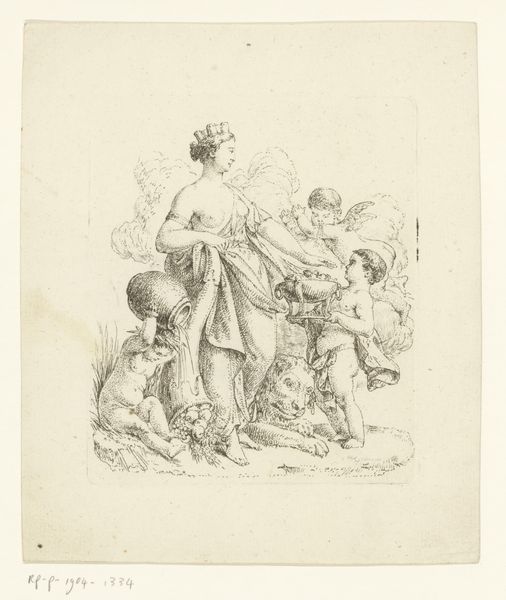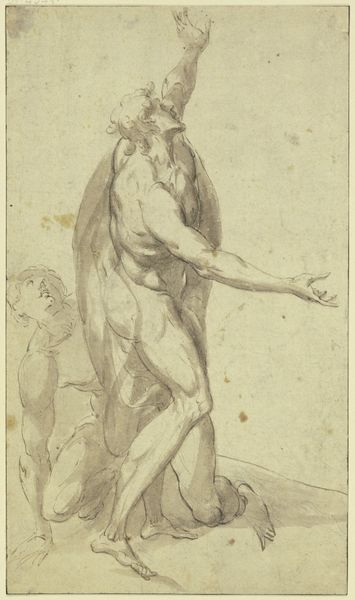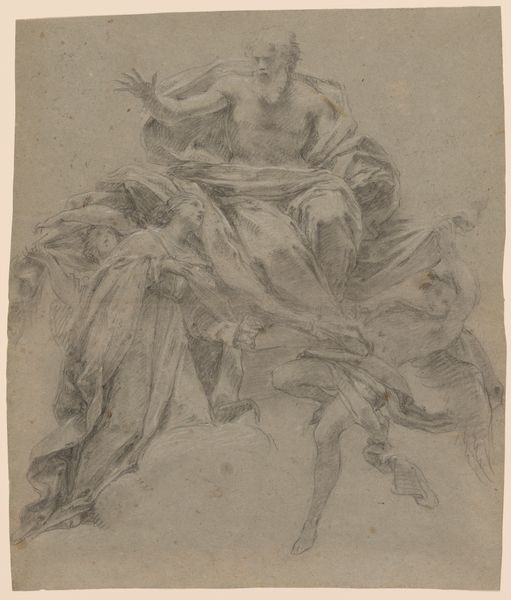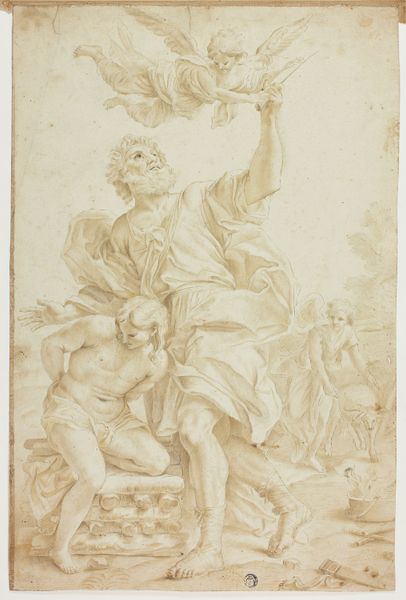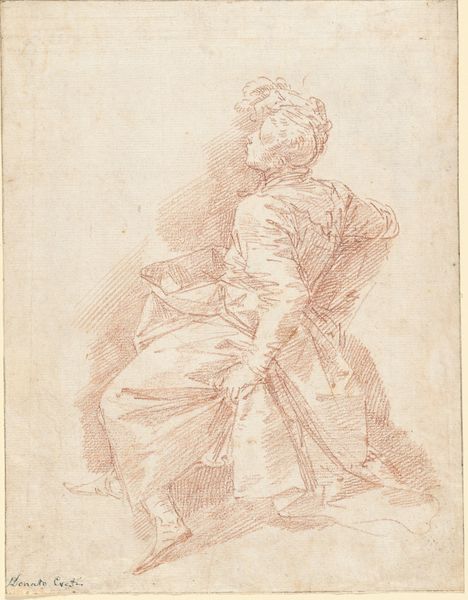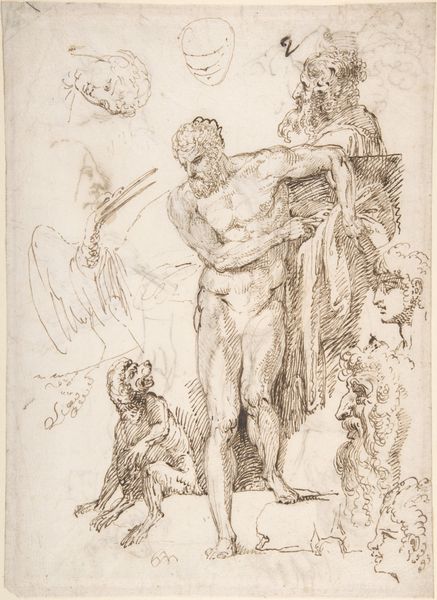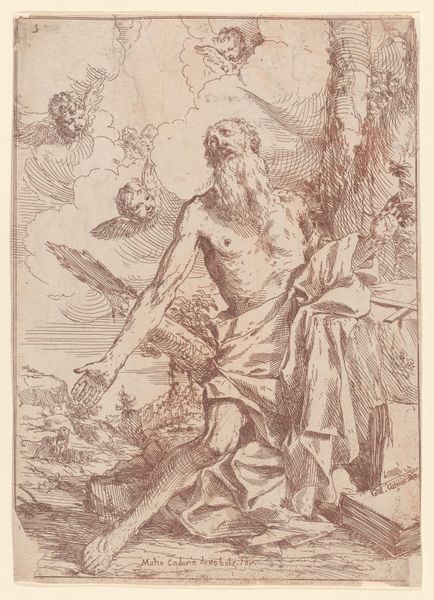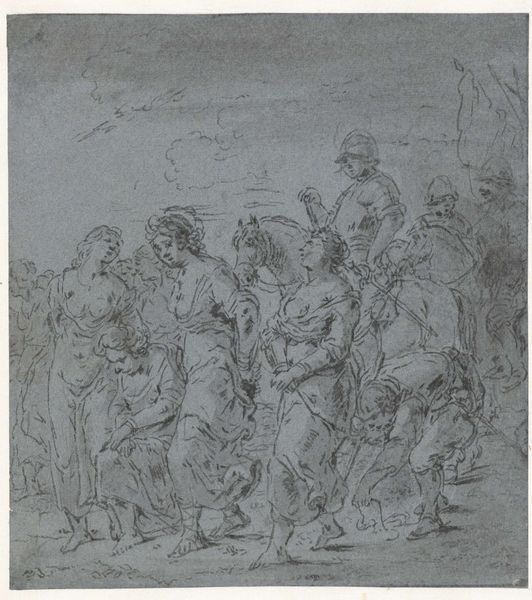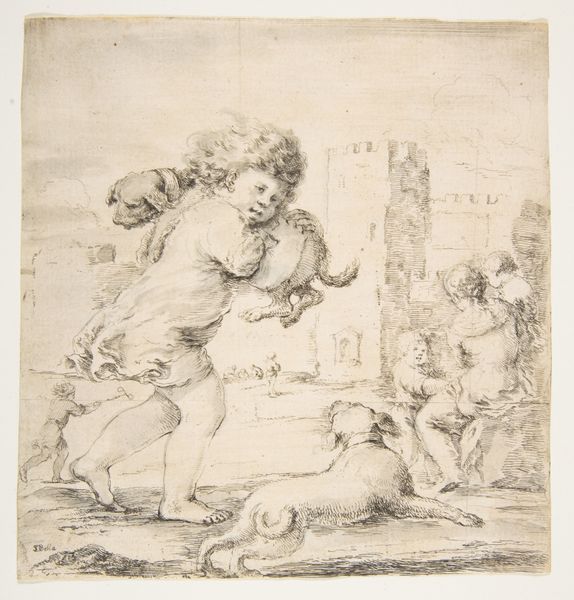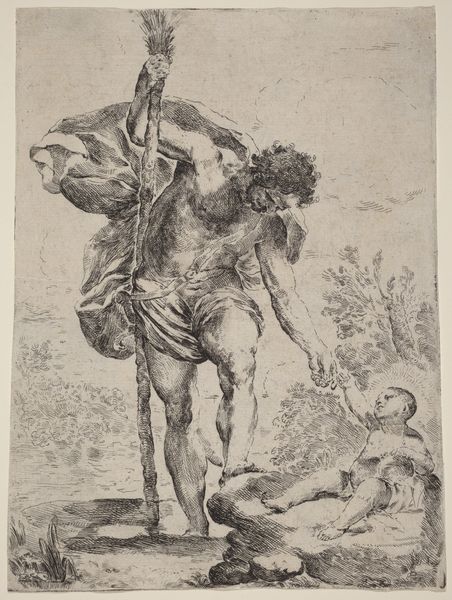
drawing, print, paper, pencil
#
portrait
#
drawing
#
baroque
# print
#
figuration
#
paper
#
pencil
#
history-painting
#
academic-art
Dimensions: 7 3/4 x 5 3/8in. (19.7 x 13.6cm)
Copyright: Public Domain
Editor: So, here we have Corrado Giaquinto's "Aeneas and the Sibyl," a pencil and paper drawing likely created sometime between 1703 and 1766. It feels...sketchy, of course, but there’s also this incredible focus on drapery. What can you tell me about the context and materiality here? Curator: The relative disposability of drawing media – pencil and paper – allowed Giaquinto to explore historical painting on his own terms. What sort of labor do you think is required to produce drawings in the 18th century, versus painting, let's say? Editor: Well, drawing supplies seem simpler, right? Maybe more artists had access, meaning more exploration of ideas could happen, like sketching out compositions before a final painting. So, this could represent initial stages of production? Curator: Exactly. Consider that drawing may also stand as a relatively immediate, unfixed idea: this piece challenges conventional academic boundaries between high art and the ‘lesser’ medium of drawing, making sketches worthy of display. How might the economics of paper production affect its usage at the time? Editor: Huh. Well, if paper was expensive or rare, that adds weight to these sketches. It suggests Giaquinto saw value in them beyond just preparatory work and would speak to a certain kind of elite access, doesn’t it? Curator: Precisely. He may be elevating this disposable medium, using it to participate in intellectual culture while also signifying status, the "stuff" from which more ‘durable’ high art is made. It's also about his craft, isn’t it? He seems to revel in using these base materials to convey such classical imagery. Editor: That’s interesting to think about – he is imbuing inexpensive resources with value through his skill and intellectual vision. Thank you. Curator: My pleasure! It's always good to remember how the materiality of art is intrinsically tied to its creation, consumption, and even its cultural value.
Comments
No comments
Be the first to comment and join the conversation on the ultimate creative platform.
